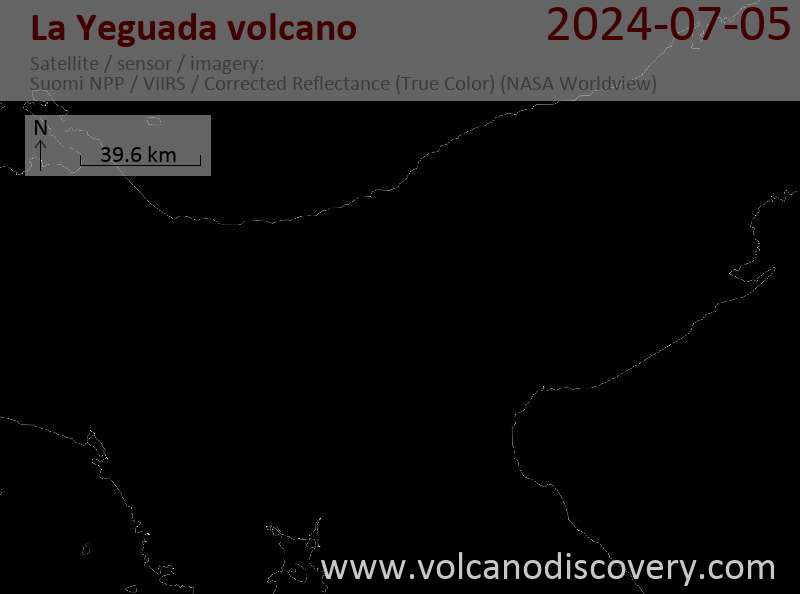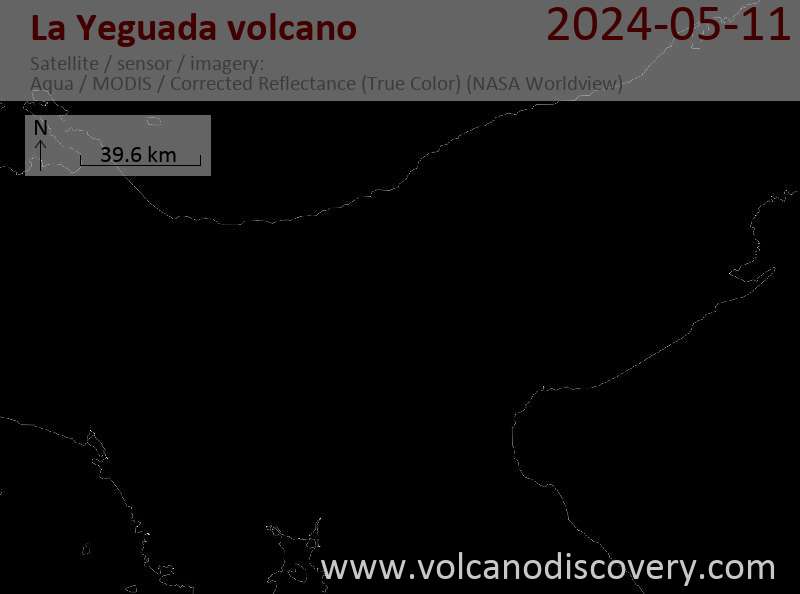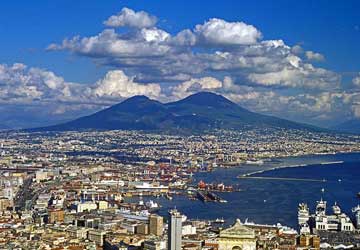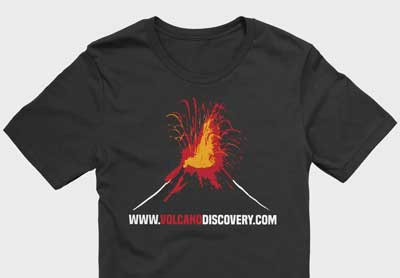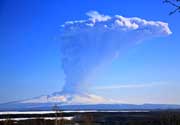La Yeguada Volcano
Updated: Jul 31, 2025 19:59 GMT -
stratovolcano
Panamá, 8.47°N / -80.82°W 
Summit height: 1297 m / 4,255 ft
Current status: (probably) extinct (0 out of 5)
La Yeguada volcano (also known as Chitra-Calobre) is a stratovolcano in west-central Panamá east of Laguna La Yeguada and north of the Azuero Peninsula.
The last volcanic activity was at the Media Luna cinder cone about 45,000 years ago. The widely spread information that it erupted only 300-350 years ago is most likely wrong (see below).
There is geothermal activity with warm springs at the volcanic complex, including the Chitra-Calobre geothermal field which is the site of intensive geothermal exploration.
[smaller] [larger]
La Yeguada volcano eruptions: 45,000 years ago (Media Luna cinder cone)
Latest nearby earthquakes
| Date and Time | Mag / Depth | Distance / Location | |||
|---|---|---|---|---|---|
Background
Volcanoes on the Azuero Peninsula were active from the Miocene into the Quaternary. The youngest major feature of La Yeguada is located within a large fault-bounded horst that forms the high point of the volcanic complex.The latest eruptions took place from the northern part of the horst about 220,000 years ago at Cerro Corero lava dome (also known as Cerro de la Charca), north of El Castillo.
The youngest feature of the La Yeguada complex is the Media Luna cinder cone, which was erupted through Tertiary ignimbrite deposits at the NW side of the complex. The oldest peat layer within a small lake dammed by a basaltic lava flow originating from the cone was radiocarbon dated at about 300-350 years ago, but later dating has shown that flow was erupted about 45,000 years ago, and that the La Yeguada complex has not had Holocene eruptions.
---
from: Smithsonian / GVP volcano information
Latest satellite images
La Yeguada Volcano Maps
Below is a selection of maps showing the location and surroundings of the volcano at various resolutions based on aerial-imagery / terrain maps. Feel free to use them for non-commercial purposes on your blog or website as long as you credit them with a link back to this page (click to copy it).

Satellite/aerial-type map of La Yeguada volcano (world scale)

Terrain-type map of La Yeguada volcano (world scale)

Satellite/aerial-type map of La Yeguada volcano (region scale large)

Terrain-type map of La Yeguada volcano (region scale large)

Satellite/aerial-type map of La Yeguada volcano (region scale medium)

Terrain-type map of La Yeguada volcano (region scale medium)

Satellite/aerial-type map of La Yeguada volcano (region scale small)

Terrain-type map of La Yeguada volcano (region scale small)

Satellite/aerial-type map of La Yeguada volcano (local scale large)

Terrain-type map of La Yeguada volcano (local scale large)

Satellite/aerial-type map of La Yeguada volcano (local scale medium)

Terrain-type map of La Yeguada volcano (local scale medium)

Satellite/aerial-type map of La Yeguada volcano (local scale small)

Terrain-type map of La Yeguada volcano (local scale small)

Satellite/aerial-type map of La Yeguada volcano (scale of 10s of km)

Terrain-type map of La Yeguada volcano (scale of 10s of km)

Satellite/aerial-type map of La Yeguada volcano (scale of 20-40 km)

Terrain-type map of La Yeguada volcano (scale of 20-40 km)

Satellite/aerial-type map of La Yeguada volcano (scale of approx. 10-20 km)

Terrain-type map of La Yeguada volcano (scale of approx. 10-20 km)

Satellite/aerial-type map of La Yeguada volcano (scale of 5-10 km)

Satellite/aerial-type map of La Yeguada volcano (scale of few kilometers)




